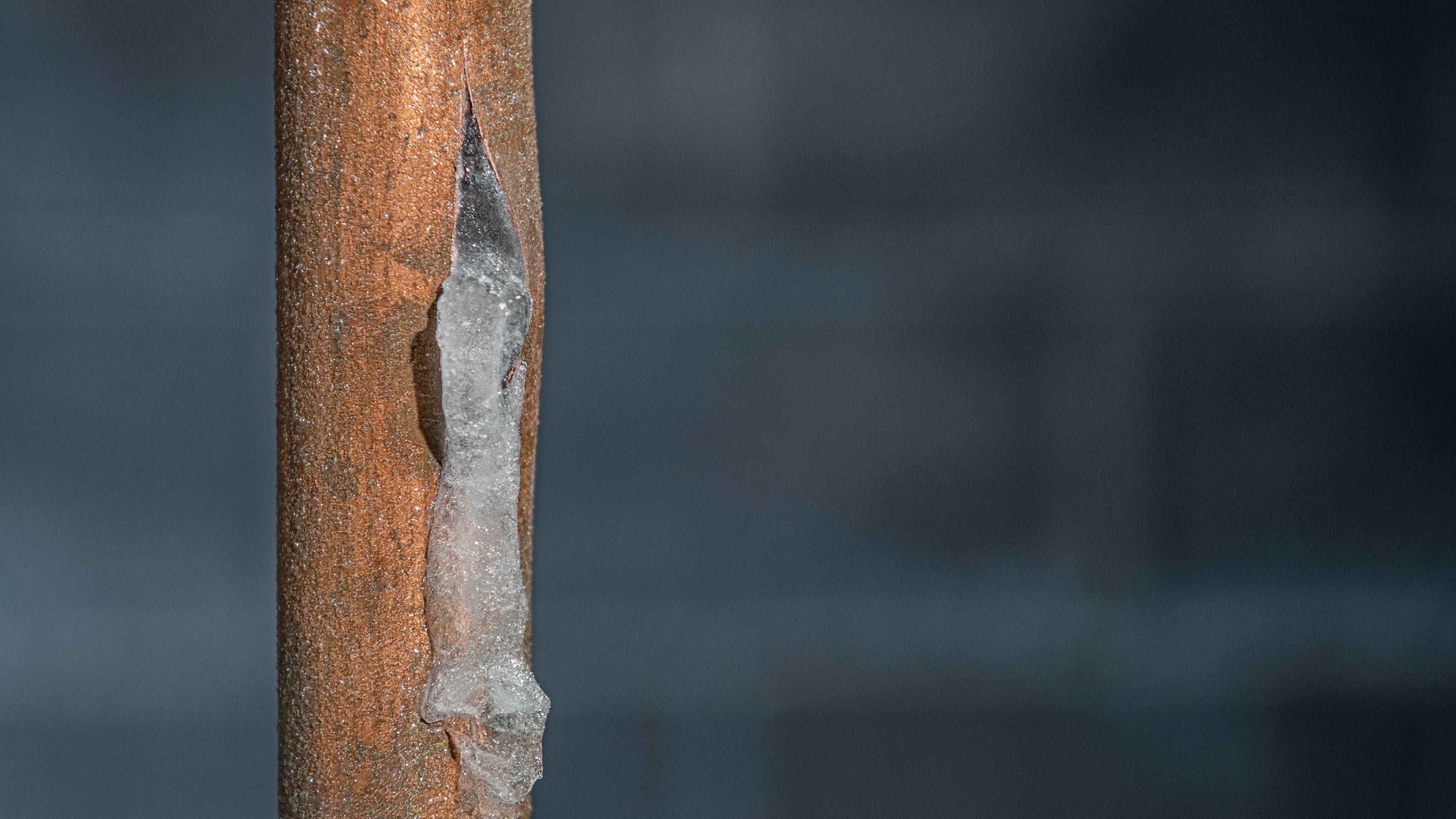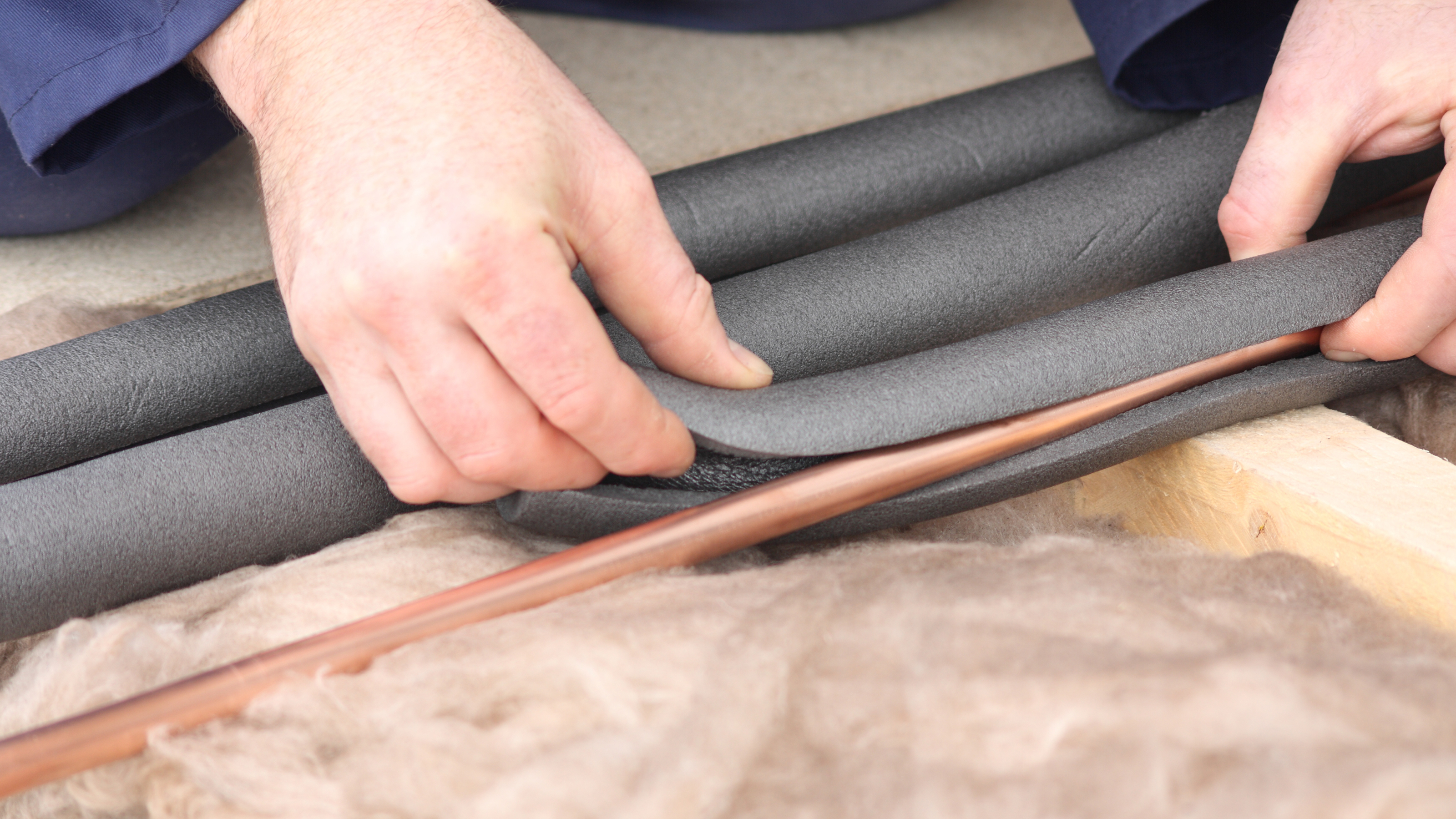How to stop pipes freezing and what to do if they burst
Pipes freezing can be a real worry as temperatures fall — and if they burst things can get even worse. Fear not though, we are here with ways of preventing the problem

Colder temperatures can lead to pipes freezing — a potentially disruptive and costly issue for homeowners to deal with.
Luckily, there are steps you can take that will stop this from happening that can be easily completed on a DIY basis and paired with other jobs such as draught proofing.
"While damage from frozen pipes is thankfully quite rare, when it does happen it can result in severe inconvenience to the owner and can cause tens of thousands of pounds worth of damage," says Andrew Chalk, Home Insurance Specialist at NFU Mutual. “Britain is generally a mild country, but cold snaps can see cases of frozen pipes rocket. When the ‘Beast from the East’ struck the country in 2018, NFU Mutual saw over 1660 claims for leaks following frozen pipes, more than ten times the average in the milder years since, so it really is better to be safe than sorry."
To further exacerbate matters, the rising cost of energy has seen many people reluctant to use their central heating — something that can increase the risk of frozen pipes and associated issues.
Here, we offer the best advice around on how to protect your home from this pesky problem this winter. We will also be looking at what to do should the worst happen.
What leads to pipes freezing?
Most water pipes, even when the taps aren't on in your home, will contain small amounts of water. When the temperature falls, this water can freeze, leaving you at best with no water and, at worst, with burst pipes and a flooded home.
Thankfully this is a problem that can be avoided if you are willing to put the right prevention measures in place.
How can I stop pipes freezing?
There are several methods you can use to prevent pipes from freezing and, happily, most of these will not cost the earth — yet they could, in the long run, save you thousands.
"From 2019 to 2021, the average cost of a home insurance claim to NFU Mutual relating to frozen pipes was over £8,000," says Andrew Chalk.
So, just what are the best ways to prevent pipes freezing this winter? We have rounded up the top five jobs you can do right now to protect your home during the chilly season.
1. Insulate water pipes
One of the best things you can do to stop frozen pipes is to insulate them. Use pipe lagging and prioritise spots that are particularly exposed to the cold, such as external pipes and those that are located in the loft or cellar.
Insulating pipes is one of those energy saving tips that will not only save you money on your bills but will also prevent your home from any potential damage from burst piping.The insulation will keep the water inside your pipes warmer so you greatly reduce the risk of them freezing.
"A quick and easy technique that can help you save money on your bills for the incoming winter period is pipe lagging," explains Alex Beckwith, bathroom expert at Victorian Plumbing. "By simply wrapping your pipes in insulation, you can prevent and delay the point of freezing."
Pipe lagging involves wrapping your pipes in an insulating material, like this foam 15mm pipe insulation from Wickes, to stop the cold from reaching them and from heat being lost through them. Lagging is inexpensive and comes in many different forms, from foams to tapes. In many cases it can be fitted on a DIY basis. Fitting a tank jacket, like this one for £22 on Wickes, is also a good idea.

2. Use your heating system wisely
Right now, what central heating costs per hour is something very much on people's minds and although it can be tempting to try to save money by keeping your heating system off, this can actually spell disaster for your pipes.
"As people look to tackle the cost-of-living crisis and the rise in their energy bills, a YouGov survey shows 61% of people will use their heating less this winter," says Andrew Chalk. "Unfortunately, this could make the risk of pipes freezing and becoming damaged more immediate."
This doesn't mean you have to have your heating on all the time or that you need to set it to run at maximum output — but it does mean you might need to be a little more switched on when it comes to how you use it.
"Set your thermostat to kick in above freezing temperature, or set the heating to regularly come on, even if you are not home," suggests Andrew.
Setting your thermostat at 12-15˚C when you're away from the property is a safe bet.
3. Safeguard your home if you go away
Planning on going away for a winter break? An empty house can be even more prone to frozen and burst pipes, so think ahead and get prepared.
As well as ensuring that your heating will still be on for a set amount of time each day, there are other steps you can take to look after your plumbing system.
"If leaving the house for a number of days, turn the water off at the mains and run the taps to avoid water building up in pipes," suggests Andrew Chalk. If you are going to be away for even longer it might be worth draining the water from your system completely.
4. Fix leaks quickly
A faulty plumbing system and any leaking taps are even more prone to freezing so make sure your system overall is in good working order — don't just ignore the problem.
In fact, leaky taps can lead to all kinds of other issues in cold weather, causing drains to freeze and water to back up to your sink, which can eventually lead to an overflow.
You can avoid any of these kinds of problems by simply ensuring your taps are always properly turned off and finding out how to fix a dripping tap so that you can put the issue right quickly.

5. Take a whole house approach to insulation
As well as lagging pipes inside your home, it really does pay to ensure your house, as a whole, is well insulated. Don't neglect external pipework, including overflow pipes and your boiler condensate pipe. Use insulated tap covers on outdoor taps and insulate water tanks in lofts, garages and basements.
Draught proofing a front door properly, insulating windows, using draught excluders, insulating any unused chimneys and generally doing everything you can to keep the temperature steady and comfortable in your home should really help to prevent frozen pipes.
Why do pipes burst?
When the water in pipes freezes, it expands. This causes the pressure inside the frozen pipe to build up which, in turn, leads to the pipe to splitting, especially when it begins to thaw. This is where flooding can occur.
What are the signs of frozen pipes?
There are some very obvious signs to look out for when it comes to frozen pipes. Be on high alert for any of the following, all point to potential problems:
- Toilets not refilling after flushing
- Boiler stops working
- No water coming from taps when turned on
- Radiators not heating up
How do you thaw a frozen pipe?
If you do happen to find you have a frozen pipe there are some quick steps you can take to get it defrosted.
Firstly, turn your water off at your mains water stopcock. You should then open all your taps and use hot cloths, towels soaked in hot water or a hot water bottle to try to warm up and thaw the frozen area of pipework. A hairdryer can come in handy here too.
You can also use your heating system to defrost frozen pipes. Try turning it up to increase the overall air temperature in your home — this can be enough to thaw the affected pipes. Additionally, you might like to try using a portable heater, if you have one, in unheated spaces such as your loft.
If several of your pipes appear to be frozen, the pipes have split or you notice a leak, it is time to call in the services of a plumber.
Never use a naked flame, such as a blowtorch, to defrost pipes and avoid pouring boiling water over them.
Get the Homebuilding & Renovating Newsletter
Bring your dream home to life with expert advice, how to guides and design inspiration. Sign up for our newsletter and get two free tickets to a Homebuilding & Renovating Show near you.
Natasha was Homebuilding & Renovating’s Associate Content Editor and was a member of the Homebuilding team for over two decades. In her role on Homebuilding & Renovating she imparted her knowledge on a wide range of renovation topics, from window condensation to renovating bathrooms, to removing walls and adding an extension. She continues to write for Homebuilding on these topics, and more. An experienced journalist and renovation expert, she also writes for a number of other homes titles, including Homes & Gardens and Ideal Homes. Over the years Natasha has renovated and carried out a side extension to a Victorian terrace. She is currently living in the rural Edwardian cottage she renovated and extended on a largely DIY basis, living on site for the duration of the project.

